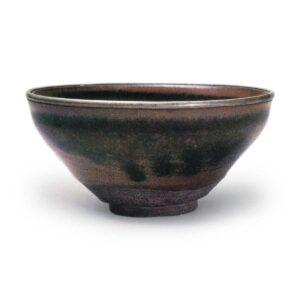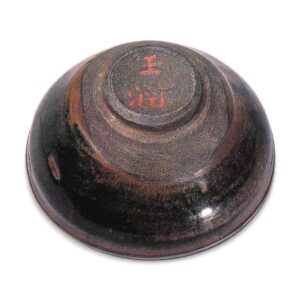

Famous
16th century
Height 6.5cm, mouth diameter 12.2cm, bottom diameter 4.3cm
Tokugawa Reimeikai
This is one of the famous bowls handed down in the Bishu Tokugawa family. Although the origin of this bowl is not known, it has an inscription “Tamajun” in red lacquer on the underside and is said to have been made by Sen no Rikyu, according to an old manuscript by Ryo Ban Meiri. It is thought to have been made in the first half of the 16th century, judging from its low height in relation to its diameter, the inwardly bowed waist, and the form of the so-called shiitake mushroom base, in which a ridge is drawn at the border between the base and the waist and the back of the base is cut to the inward bow. The base is a rather coarse clay of light brown color, and the waist has been shaved off to create a sharply carved base. The glaze has a light brown color at the mouth and the edge, and a jet-black glossy glaze in the middle. There is no other Seto ware of this period with such an excellent tone, and it may be the product of a large Mino kiln. In any case, this is the finest Tenmoku tea bowl of the late Muromachi period.



